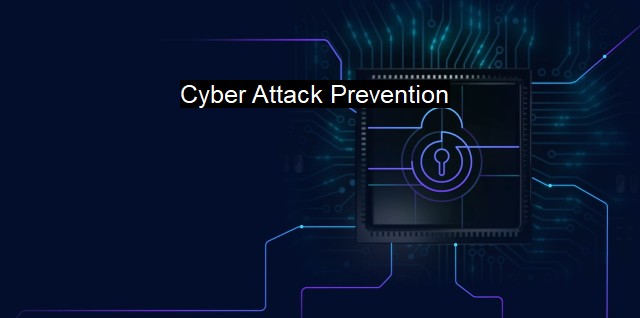What is Cyber Attack Prevention?
Protecting your Organization: The Importance of Cyber Attack Prevention and Antivirus Security in today's Digital Landscape
Cyber attack prevention relates to measures taken to protect digital systems and networks from harmful attacks orchestrated to access, change, or destroy crucial information systems and data. With our reliance on digital networks skyrocketing the need for strong and reliable cyber attack preventative measures in cybersecurity has become exceedingly important. Cybersecurity involves using strategies and complex systems to counter such threats, whereas antivirus is a software specifically designed to detect and obliterate harmful malware programs.There has been a massive wave of cyber attacks across the globe in recent years. State-sponsored cyber-attacks, organized crime groups, and individual hackers target anything from personal data to disrupting nationwide infrastructures, leading to considerable financial and personal harm for individuals and corporations alike. This puts those in the realms of cyber terrorism, cyber warfare, and cyber espionage, foregrounding the urgency for cybersecurity and antivirus. Therefore, understanding what constitutes cyber attack prevention is vital for everyone using the internet and connected systems today.
Firstly, strong cyber attack prevention requires reliable detection. Cybersecurity experts constantly survey systems for anomalies as even small changes may depict the arrival of a potential attack. They closely monitor network traffic and search for irregular activities regularly and systematically. Cybersecurity employs various scanning tools to identify irregularities, detect new or unpatched vulnerabilities and fix them to counter potential threats.
In the heart of the prevention strategy is the use of advanced antivirus programs. These software systems continuously scan computers, networks, software, and files for potential threats, identify them, and destroy or neutralize them before they can harm the system files. These antivirus programs are engineered to deal with rapidly evolving malware and keep updating to recognize the latest threats.
Prevention also relates to educating users about safe online practices since many cybersecurity breaches occur because of the careless actions or lack of security awareness of the system's user. This ranges from not clicking on suspicious links, avoiding download from unprotected websites, using complex and unique passwords for all accounts, regularly updating all software, and more. Providing vigorous training in phishing detection and safe browsing habits can reduce the risk of many cyber threats.
Multi-factor authentication (MFA) and encryption are integral parts of a robust cybersecurity strategy. MFA necessitates users to provide multiple separate pieces of evidence to verify their identities before gaining entry into systems thereby warding off potential cyber attacks. Encryption, on the other hand, protecting data by converting it into an incomprehensible code for unauthorized personnel.
Periodic backup also forms a crucial part of cybersecurity. In the event of a breach, the damage is minimized by having backups of all necessary files stored in a secure location. Regular audits of these security measures, followed by the immediate operation and modification based on what's found, help sustain security at the highest levels.
Prevention also takes the form of establishing a cybersecurity culture across the organization with clear rules to respond to attacks swiftly and promptly. This culture includes establishing best practices for when to report suspected cyber-attacks and which steps should be taken to minimize potential damage.
As our networks, data, and systems adjust to the digital age, they become prime targets for cyber attackers resulting in high stakes for individuals and organizations. Cyber attack prevention cannot necessarily eliminate the risk of cyber attacks from happening, but it can help decrease the attack success rate significantly. Implementing comprehensive cybersecurity measures to protect and negate harmful cyber threats defines cyber attack prevention, from antivirus software to teaching everyone safer online habits. But remember that prevention is an ever-evolving process and the fight against cyber threats is a never-ending one - it requires continuous improvement, adaptation, and upskilling.

Cyber Attack Prevention FAQs
What is a cyber attack?
A cyber attack is an attempt by hackers or cybercriminals to breach a computer system or network with the purpose of stealing data, causing damage or disruption, or gaining unauthorized access to sensitive information.What are some common types of cyber attacks?
Some common types of cyber attacks include phishing, malware, ransomware, denial-of-service attacks, SQL injection, and password attacks.How can I prevent cyber attacks on my computer or network?
You can prevent cyber attacks by using antivirus software, keeping your software up to date, using strong passwords, being cautious of suspicious emails and attachments, and restricting access to sensitive information.What should I do if I suspect a cyber attack on my system?
If you suspect a cyber attack on your system, immediately disconnect from the internet and shut down your devices. Contact your IT department or cybersecurity professional to assess the damage and take necessary steps to recover and prevent further attacks.| | A | | | B | | | C | | | D | | | E | | | F | | | G | | | H | | | I | | | J | | | K | | | L | | | M | |
| | N | | | O | | | P | | | Q | | | R | | | S | | | T | | | U | | | V | | | W | | | X | | | Y | | | Z | |
| | 1 | | | 2 | | | 3 | | | 4 | | | 7 | | | 8 | | |||||||